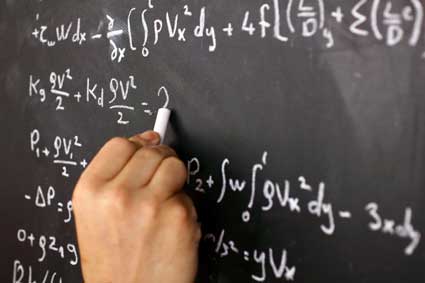When you walk across a shaggy carpet in your bare feet, you sometimes get the sensation of your hair sticking straight up on your head. Same is true, at times, when you take clothes out of a hot dryer (should you not use a cling free dryer sheet) and the socks stick to your towels. In both cases, these types of scenarios tend to be a result of what is known as Static Electricity.
Static electricity is the result of materials that have inadvertently been rubbed together, for instance, a bare foot and carpet, or clothes and circulating hot air. The objects in question find that they have an attraction to one another and produce a spark that bounces from one object to the other.
As you can probably gather from its name, static electricity is a stationary (non-moving) electric charge which has collected on a material. Static electricity is formed when extra electrons (negatively charged particles) accumulate on a primary object and are discharged onto a secondary object.
As we learned in chemistry, everything in the universe is comprised of atoms. In turn, atoms are made up of tiny particles, some of which are positively charged (protons) and some of which are negatively charged (electrons).
For the most part, atoms are electrically neutral; the positive charges (protons in the nucleus of the atom) cancel out the negative charges (electrons surrounding the nucleus in outer shells). As a standard scientific fact, opposite charges attract one another whereas like charges repel one another.
Electric Force and Newton's Third Law
In the same way that friction, tension, gravity, and air are all resistant forces, the electrical force that is exerted between two oppositely charged objects or two similarly charged objects is also a force.
The same laws and principles that relate to any force also apply to electrical force. One such law, in particular Newton's Third Law, the Law of Action-Reaction, bears direct application. In his Third Law, Newton stated, "A force is simply a mutual interaction between two objects resulting in an equal and opposite push or pull upon those objects."
Though two objects may exert an equal magnitude of force, the type of relationship (attraction versus repulsion) that the two objects have depends upon whether the force is like-charged or opposite-charged.
When the interaction occurs between two like-charged objects the result is said to be a repulsive relationship. The interaction between two oppositely-charged objects is said to be attractive.
What type of interaction then occurs between a charged object and a neutral object? The answer is quite surprising: any charged object, regardless of whether it is positively charged or negatively charged, will form an attractive interaction with a neutral object. Positively charged objects and neutral objects attract each other, as do negatively charged objects and neutral objects.
Static Electricity and Lightning
In 1751 Benjamin Franklin first set out to prove that lighting was actually a form of static electricity.
Equipped with a kite, a key and a Leyden jar (a device for storing static electricity containing two conductors separated by an insulator) Franklin set out during a thunderstorm to conduct experiments related to electricity.
When a storm cloud passed over Franklin's kite, the negative charges in the cloud trickled down onto his kite, his kite string, his key, and the Leyden jar, which was attached to the key by a thin metal wire.
Franklin was holding a dry silk string that insulated him from the electrical charges received by the key. Franklin did, however, receive a shock when he attempted to touch the key with his bare hand.
The shock he received was a result of the negative charges from the key strongly pulling against the positive charges within his body. For all intents and purposes, Franklin's findings on that stormy night proved that lighting was indeed static electricity.
In 1749 Franklin invented the lightning rod that protects a building from a lightning strike. It is a lightning conductor placed at the top of a roof, and connected to the ground with a conductor.
When two surfaces come in contact with one another (for instance, a balloon and your hair) one object will lose electrons whereas the other will gain some.
To conduct additional studies and understand behaviors of certain objects (especially when in contact with other objects), physicists devised a system for ranking materials according to the level at which they lose or gain electrons. Called the "Triboelectric Series," this is a small list containing a group of commonly known materials.
When two of these substances come in contact with one another (rub together), the one listed higher up on the list tends to lose electrons, thus accumulates a positive charge; those listed further down on the list gain electrons and, thus accumulate a negative charge.
Triboelectric Series:
- human skin
- rabbit fur
- glass
- human hair
- nylon
- sheep's wool
- silk
- aluminum
- paper
- cotton
- wood
- amber
- Nickel, Copper, Brass, Silver, Gold, Platinum
- acetate, rayon
- rubber
- polyester
- PVC (polyvinylchloride plastic)
- Teflon
Charge as a Quantity
As is true of mass, the charge of an object is also a measurable quantity. To express the specific charge of an object, the scientific unit known as the Coulomb is employed.
Akin to how mass is measured in grams or kilograms, a charge is measured in units of Coulombs (abbreviated C). Because one Coulomb of a charge results in an abnormally large quantity, the units of microCoulombs (mC) or nanoCoulombs (nC) are more commonly used as the unit of measurement of a charge than is one single Coulomb.
The measured charge of an object reflects the level of imbalance that exists between the electrons and protons. In order to accurately determine the total charge of a positively-charged object (an object with more protons than electrons), you first must subtract the total number of electrons from the total number of protons. This formula then yields the number of excess protons an object possesses.
An electrically neutral object is an object that has an equal balance of protons and electrons. In contrast, a charged object possesses an unequal number of protons and electrons. Determining the quantity of charge on such an object involves a counting process, the total number of electrons versus protons that are present.
To determine the overall quantity of charge present in the object, this difference is then multiplied by 1.6 x 10-19 Coulombs. As a whole, the type of charge (either positive or negative) is based upon whether the atoms have an excess of protons or electrons.


























